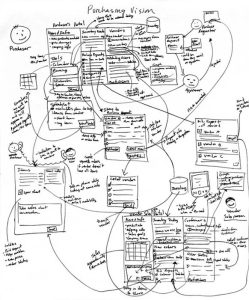How Does Contextual Design Promote User-Centered Design?
Contextual Design
Contextual Design promotes a user-centered design process that requires that users and their environments be deeply understood at all stages. This is done through contextual inquiry, user testing, and contextual design and ensures that a product fits seamlessly into users’ lives. This means that the product takes into account their physical context (where they will be using it), their social context, and their cultural context.
The goal is for designers to understand users’ workflows, habits and goals in the context of their daily life in order to develop products that are more natural and intuitive. To do this, a designer must go out into the field to observe and talk with users. This enables the designer to understand their context, which is important because it’s what gives meaning and purpose to their actions. This is why Contextual Design is a key component of the user-centered design process and is essential for creating a good product.

This type of research allows the team to understand how a person completes a task in their real world and to see how a technology could be used to streamline that workflow, enabling the team to focus on making people’s work better rather than simply re-designing business processes. This focuses the design team on solving real problems for customers, and makes the product a genuine fit in people’s day-to-day lives.
How Does Contextual Design Promote User-Centered Design?
To do this, the interviewer enters the field with a set of questions but also asks questions that are open-ended and encourages discussion to draw out the details of the work practice as the interviewer partners with the user as an apprentice would learn from their master. This interviewing technique, called contextual inquiry, is a fundamental part of the Contextual Design approach and is more effective than self-reported survey techniques or lab-based interviews.
The consolidated data from this kind of field research is used to facilitate the next step in the Contextual Design process, visioning. During this stage, the team uses a synthesis of the gathered information to create an outline for how a solution might be built. This is often a system that can be broken down into components to make it easier to develop and roll out in an enterprise setting, and that will support users’ ongoing workflows.
This is a critical stage in the process because the team must take the real-world constraints of users into account, such as their existing infrastructure and budgets, and balance this against the scope of the project. It also includes determining how to implement the system at different levels in an agile manner, prioritizing features, and ensuring that engineering tradeoffs do not degrade the usability of the overall solution.
Contextual Design can be utilized at all phases of the design process, from conceptual sculpting through to final product ship. It’s important to note that a successful product requires a talented and motivated team, so the process also includes strategies for managing people, such as identifying who will be your gas and oil (who won’t slow down the process), who will be a blocker and who is open to new ideas.